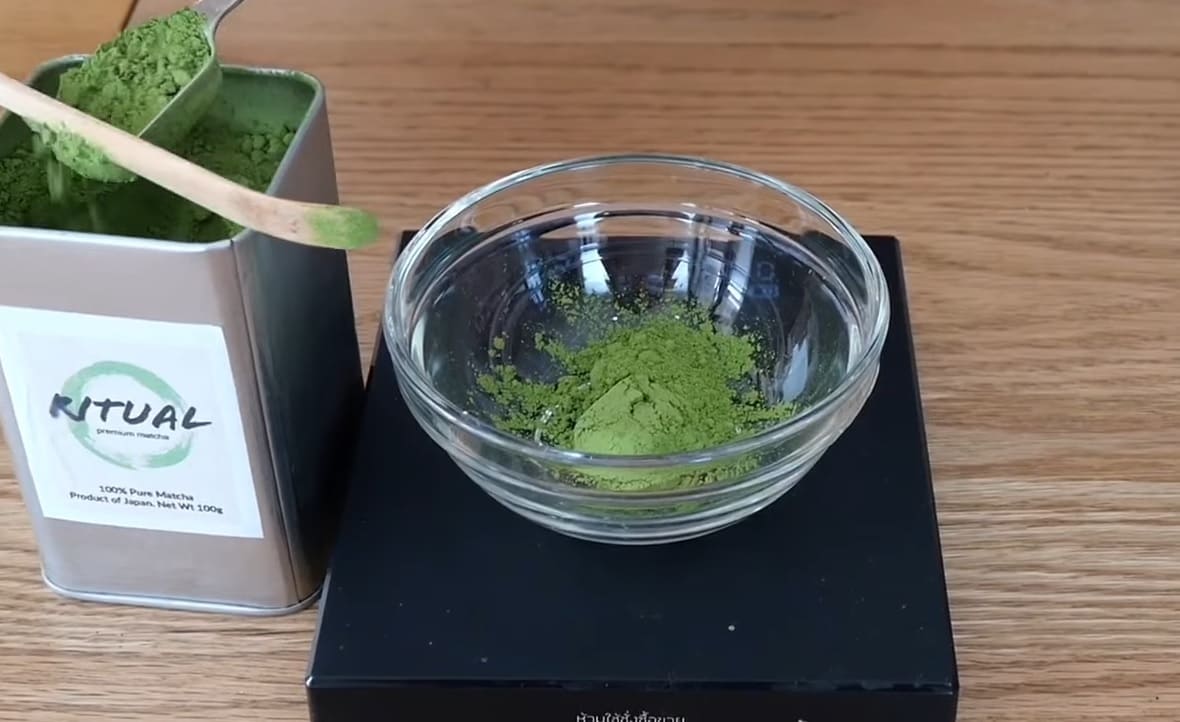Can You Mix Matcha With Milk?
While traditional Japanese tea ceremonies use pure hot water to prepare matcha, modern matcha drinkers worldwide have embraced mixing the bright green powder with creamy white milk. The result is a flavorful fusion that creates smooth, sweet matcha lattes. But does adding milk enhance matcha or detract from its natural essence? This article will examine the pros and cons of making matcha with milk and non-dairy alternatives. We’ll compare preparation methods, discuss scientific effects on antioxidants, and recommend recipes to try. Mixing and matching matcha with various milk options can strike the perfect balance between rich flavor and health benefits.
Matcha and Milk
While the traditional Japanese tea ceremony uses pure hot water to whisk matcha powder, many modern matcha drinkers enjoy complementing the bold green tea with creamy milk. The fusion creates latte-style matcha beverages with sweet, smooth textures.

Matcha Milk Tea
According to Bonsai Cha, a popular blended matcha milk drink is matcha milk tea, also called matcha bubble tea or boba. This fusion beverage combines traditional matcha preparation with milk.
Specifically, matcha milk tea is made by:
- Whisking matcha powder with hot water first
- Adding a sweetener like sugar or honey
- Pouring in cold milk (dairy or plant-based)
- Topping with boba pearls (optional)
The milk creates a sweet, creamy contrast to the vegetal matcha that is enjoyed worldwide.
Benefits of Adding Milk
There are several reasons why milk is commonly added to matcha:
- Creaminess – Milk provides a smooth, creamy mouthfeel.
- Sweetness – Lactose and proteins in milk offer natural sweetness.
- Flavor balance – Milk mellows bitter notes in matcha.
- Texture – Emulsified milk suspends matcha powder.
- Calming effect – Milk may boost L-theanine relaxation.
- Enjoyment – Milk matcha may be more palatable for some.
The rich taste and silky texture of milk-infused matcha are widely appealing.
Types of Milk for Matcha
Many types of milk can be used to make creamy matcha drinks:
- Dairy milk – Whole, 2%, skim, or half-and-half all work well.
- Non-dairy milk – Almond, oat, soy, coconut, hemp, cashew.
- Cream – Heavy cream or half-and-half for extra richness.
- Condensed milk – Sweetened or evaporated milk.
- Nut milk – Almond, coconut, cashew, or oat milk.
Experiment to find your favorite milk matcha combination.
Matcha Latte Preparation
To make a matcha latte with milk:
- Add 1 tsp matcha to a small amount of hot water
- Whisk vigorously until frothy to dissolve powder
- Heat milk separately until steaming but not boiling
- Combine milk and matcha mixture
- Use a milk frother or blender for a creamy texture
- Sweeten to taste with sugar, honey, or syrup
- Pour into a cup and top with extra foamed milk
Proper mixing ensures a smooth, emulsified matcha latte.

Iced Matcha Lattes
Matcha lattes can also be enjoyed chilled:
- Brew hot matcha milk mixture first
- Cool briefly, then pour over ice to prevent cracking
- Add milk cubes for even more creaminess
- Shake vigorously before drinking to remix
- Garnish with ice cream for a matcha float!
Iced matcha lattes are refreshing, energizing treats.
Matcha Milk Tea Powder
For easy matcha milk tea, pre-made powder blends are available:
- Combine matcha, milk powder, creamer, and sugar
- Add powder to hot water for an instant latte
- Look for high-quality ingredients without additives
- Make fresh for optimum flavor and antioxidants
Powders offer convenient matcha milk tea anywhere.
Flavor Profile Changes
Adding milk affects matcha’smatcha’s flavor:
- Umami – Milk masks matcha’smatcha’s savory notes
- Bitterness – Milk creates sweetness to offset bitterness
- Aroma – The scent is subtler with milk added
- Creaminess – Smooth, creamy texture from milk fats
- Sweetness – Lactose and milk proteins offer sweetness
While diminished, matcha flavors still come through creatively with milk.
Health Effects of Milk
Does milk change the health benefits of matcha?
- Antioxidants – Some studies show milk may inhibit EGCG levels.
- Caffeine – Caffeine bioavailability may increase slightly with milk.
- Benefits retained – Overall, key benefits remain but may be reduced.
Milk matcha still provides antioxidants and amino acids – optimize with plant milk.
Quality and Safety
When making matcha milk drinks:
- Use high-grade, fresh matcha for best flavor
- Avoid boiling milk to prevent scalding
- Refrigerate prepared milk matcha drinks
- Drink within three days for food safety
Careful preparation preserves quality and limits foodborne illness risks.
So, while veering from tradition, milk can be an enjoyable complement to matcha. The creamy addition mellows bitterness and creates latte-style matcha beverages bursting with sweet, smooth flavor. With care to retain the essence of matcha, milk can elevate this treasured green tea.
Nutritional Properties
Nutritional Properties
When it comes to the health benefits of matcha, many wonder if adding milk reduces its nutritional value. However, as Bonsai Cha indicates, research shows matcha retains its key antioxidants, amino acids, and other healthful compounds even when consumed with milk.

Antioxidant Levels
Matcha is prized for its high concentration of the antioxidant EGCG. Studies found:
- EGCG is present in matcha made with milk – Milk does not eliminate this key antioxidant.
- However, milk may lower EGCG extraction by up to 20%, But levels remain high.
- Catechins like EGCG bind to milk proteins – But are not rendered totally inactive.
- Whole milk had less effect than skim milk – Fat may shield some EGCG.
While reduced, antioxidant capacity remains significantly high with milk matcha.
Amino Acids
The amino acid L-theanine, which boosts alpha waves in the brain, is also retained:
- L-theanine is not degraded by milk – It remains bioavailable.
- Fat content unaffected levels – Whole vs. skim milk shows no difference.
- Heat does not destroy L-theanine – Hot milk brewing maintains levels.
This relaxation-promoting amino acid is still present in milk matcha.
Additional Nutrients
Further nutrients are preserved:
- Fiber – Milk does not eliminate the fiber in matcha.
- Chlorophyll – This blood cleanser remains present.
- Vitamins & minerals – Vitamin C, zinc, and selenium are all still provided.
- Aroma compounds – Flavorful benefits intact.
Key micronutrients are still supplied by milk matcha.
Caffeine Content
Matcha contains less caffeine than coffee, and milk does not change levels:
- 1 tsp matcha has around 35mg of caffeine
- Adding milk does not increase caffeine
- Milk may slightly elevate absorption – But caffeine level remains low
The energizing yet gentle caffeine lift is still provided.
Bioavailability
How available are matcha’smatcha’s nutrients with milk added?
- Fat aids absorption of compounds – Whole milk may increase bioavailability.
- But milk proteins can also inhibit the absorption of catechins.
- The heat helps extract nutrients from matcha.
Overall, key benefits are still conferred even with possible reduction.
Choosing Milk Type
Research on how milk type impacts matcha benefits shows:
- Plant milk, like soy preserves EGCG best.
- Skim milk lowers EGCG more than whole milk.
- Non-dairy creamer performed worst in one study.
- Consider nut milk to maximize antioxidants.
But any milk type still retains healthful matcha components.

Health Benefits Persist
Overall, science indicates matcha is still made with milk:
- Provides potent antioxidants
- It contains active amino acids like L-theanine
- Supplies vitamins, minerals, and fiber
- It has a low caffeine lift without spikes
- It delivers a big nutrient boost versus plain milk
So enjoy matcha lattes, knowing the benefits outweigh any small reductions.
In summary, research shows that while milk may slightly lower antioxidant levels in matcha, key health-promoting compounds largely persist. Nutrients like amino acids and fiber remain intact. The bottom line is milk matcha still packs an antioxidant punch plus other benefits.
Types of Milk
Bonsai Cha outlines several delicious options when choosing which type of milk to mix with matcha powder. Different kinds of dairy and plant-based milk alternatives each impart flavors, textures, and nutrition profiles to matcha drinks.
Dairy Milk
Dairy milk is a prime choice for a creamy, classic matcha latte. Popular varieties include:
- Whole milk – Higher fat content creates a rich, indulgent mouthfeel.
- 2% reduced fat milk – Offers a creamy medium texture with less fat.
- Skim or nonfat milk – Lower in fat yet still gives a smooth latte.
- Half and half – Higher fat content halfway between cream and milk.
- Heavy cream – Imparts a very thick, dense richness.
The higher the fat, the richer the sipping experience.
Non-Dairy Milk
Many opt for plant-based milk alternatives to make matcha dairy-free. The top options are:
- Almond milk – Provides a nutty flavor and creamy drink.
- Coconut milk – Lends a subtle coconut sweetness and velvety texture.
- Oat milk – Creamy with a subtle oatmeal taste.
- Soy milk – Adds a bean-like quality with decent creaminess.
- Hemp milk – Earthy, nutty profile with light consistency.
Experiment to find your favorite non-dairy matcha latte.
Avoiding Undesirable Milk Options
Some milk varieties are less suitable for matcha:
- Flavored milk – Added sugars and flavors distract from matcha.
- Condensed milk – Overpoweringly sweet, masks all matcha flavor.
- Raw milk – Poses safety risks if unpasteurized.
- Non-dairy creamer – Artificial, inferior flavor compared to real milk.
Stick to pure forms of dairy or plant milk.
Fundamental Milk Properties for Matcha
The ideal milk for matcha has the following:
- Creamy, smooth texture – From fat content and emulsification
- Subtle natural sweetness – To mellow bitterness
- Neutral flavor – Avoid overwhelming matcha flavor
- Suspension ability – Evenly distributes matcha powder
Choose milk that complements matcha without overpowering it.
Avoiding Curdling
To prevent milk curdling in matcha:
- Don’tDon’t boil milk – Heat gently below a simmer
- Mix thoroughly to emulsify
- Avoid adding acidic juices like lemon directly to hot milk
- If curdling occurs, try adding a splash of hot water and re-blending
Proper preparation results in a smooth, creamy latte.

Nutritional Differences
Compare milk types:
- Dairy – Rich in calcium, protein, vitamin D, potassium
- Plant-based – Vary in nutrients but often have vitamin E, iron
- Lower fat – Fewer calories but less satisfying fats than whole milk
- Higher fat – More calories but keeps matcha flavor robust
Balance nutritional needs with taste preferences.
The options are vast when selecting which milk to pair with matcha. Experiment with dairy and plant varieties to create your ideal matcha latte or boba tea. Discover how different milks uniquely enrich matcha’smatcha’s flavor and texture.
FAQs
Is matcha traditionally mixed with milk?
No. In the traditional Japanese tea ceremony, matcha powder is whisked briskly with hot water to make a frothy bowl of pure tea. Adding dairy or plant milk is a more modern preparation method popularized in cafes.
Does milk change the flavor of matcha?
Yes, adding milk creates a natural sweetness that balances out matcha’smatcha’s slight bitterness. Milk also gives matcha drinks a creamy, latte-like texture and appearance. However, the vegetal flavors become more muted with dairy or plant milk added.
What types of milk work well with matcha?
Dairy milk like whole milk, 2% milk, and heavy cream work well, adding sweetness and body. Non-dairy milks such as almond, oat, soy, and coconut can also be used for smooth, creamy matcha beverages without dairy.
Should you add milk before or after the matcha?
It’s best to add a splash of the milk to the matcha powder before whisking. This helps emulsify the powder into the liquid. Add the remaining cold milk after whisking the matcha with the initial splash while still hot.
Can I use a milk frother for matcha lattes?
Yes, you can prepare matcha lattes using an electric milk frother to mix and aerate the matcha powder into hot, frothed milk. Frothers quickly create the smooth, creamy texture of a café-style latte.
Does milk affect the health benefits of matcha?
Some studies suggest milk may inhibit the antioxidant EGCG in matcha. However, matcha mixed with milk still retains benefits vs. plain milk. Limiting dairy and choosing plant milk may help maximize health effects. But enjoy matcha daily, even with milk.
What is a good matcha-to-milk ratio?
A standard starting ratio is 1 tsp matcha powder to 6-8 oz milk. Adjust to taste preference. Use more matcha, up to 2 tsp, for a bolder flavor. Increase the milk ratio to 8-12 oz per teaspoon powder for lighter flavor.
What are some good recipes with matcha and milk?
- Matcha Latte – matcha, hot milk, honey or sugar
- Iced Matcha Latte – brew hot, then pour over ice
- Matcha Frappe – matcha, milk, ice blended
- Matcha Milkshake – matcha, milk, ice cream
- Golden Milk Latte – matcha, turmeric, ginger, milk
- Matcha Panna Cotta – matcha infused with cream
Are there risks to consuming raw milk and matcha?
Raw or unpasteurized milk may contain harmful bacteria that can multiply when blended with matcha. Only use pasteurized dairy or shelf-safe plant milk alternatives to avoid foodborne illness.
Can children drink matcha with milk?
In moderation, matcha lattes made with milk are safe for children. Limit caffeine to 45mg daily for 4-6-year-olds and 85mg for ages 7-9. Discontinue use if nervousness or sleep issues occur. As always, discuss intake with your child’s doctor.
Is matcha with milk safe during pregnancy?
Matcha is likely safe in moderation during pregnancy, but check with your physician. Limit caffeine from all sources to 200mg or less per day. Matcha may offer antioxidants to benefit mother and baby. Drink plenty of water and listen to your body.
What about matcha allergy concerns with milk?
Those with dairy allergies should avoid milk with matcha. Many opt for plant-based milk instead. Be aware of nut allergies with almond, coconut, and oat milk. Hemp, soy, and rice milk work for nut allergies. Always check labels for allergens.
Does milk matcha need to be prepared differently?
The preparation steps are largely the same. Whisk the matcha powder first with hot water or milk to form a paste. Then add the remaining cold milk and whisk, blend, or froth until smooth. For iced drinks, brew hot, then chill before serving over ice.
What is the shelf life of matcha mixed with milk?
Properly stored in the refrigerator, matcha drinks made with milk typically last 2-3 days. Drink milk-based matcha within this period for the best flavor and food safety. Discard if you notice spoilage like clumping, odor changes, or mold.
Related Video: HOW TO: ICED MATCHA GREEN TEA LATTE
Summarize
Ultimately, adding milk to matcha is a matter of personal taste. Milk creates a naturally sweet, creamy mouthfeel that many enjoy. But purists say it masks matcha’smatcha’s delicate umami. Ultimately, there is no right or wrong way to prepare matcha. Honor tradition or get creative with plant-based milks – quality matcha offers nutritious antioxidants. Just use fresh ingredients and find your ideal matcha-to-milk ratio. Made with care, a frothy matcha latte with milk can be a soothing, energizing daily ritual. Keep an open mind and discover your perfect matcha preparation.







